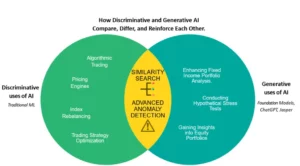
Cybersecurity is a significant concern for businesses in the digital age. With increasing numbers of high-profile cyber attacks, it is imperative for organisations to take proactive measures to safeguard their systems and data from potential threats. THETA selected Microsoft Azure as its cloud technology partner, benefiting from their robust security features that help minimise the risk of cyber attacks.
The security architecture of Azure is multi-layered, providing a secure foundation for THETA's application and data services. This includes integrated threat management and mitigation solutions, as well as the ability to seamlessly integrate with third-party security tools and services. Azure's disaster recovery and business continuity services also guarantee that THETA's services remain operational even in the event of a security incident.
THETA follows best practices for securing its services, including the use of serverless technology to deploy applications without managing underlying servers and implementing microservices and event-driven architectures to promote agility and resilience. Strict security processes are also in place for development and operations, including secure code reviews, testing, and continuous monitoring, to ensure the security of our services over time. By opting for serverless technology, the risk of malware infections and unauthorised activities is reduced, as Azure manages the underlying infrastructure, making it impossible for users to install executables that may be malware. This limits the attack surface and minimises the risk of successful cyber attacks.
The consequences of a successful cyber attack can be catastrophic, with the potential for financial losses and harm to a company's reputation and brand. By utilising modern technology and implementing robust security practices, organisations such as THETA can mitigate these risks and protect their services from potential threats.
The cyber threat landscape is constantly evolving, and it is vital for organisations to stay ahead of potential threats. By highlighting the latest trends in cyber attacks and the methods used by attackers to gain access to systems and data, organisations can understand the importance of ongoing security measures.
Organisations should adopt a risk-based approach to cybersecurity, evaluating their assets, data, and processes to identify the areas that require the most protection. This approach should be integrated into the organisation's overall security strategy and updated regularly to reflect changes in the threat landscape.
A strong security culture is also essential for the success of any cybersecurity strategy. Employees should be educated about the risks associated with cyber threats and trained on how to detect and report suspicious activity. Implementing policies and procedures to protect sensitive data, as well as educating employees on safe email and internet usage practices, can help create a security-conscious culture.
While processes are important, technology plays a crucial role in any cybersecurity strategy. Organisations should use the latest tools and technologies to detect and prevent cyber attacks.
In conclusion, protecting against cyber threats requires a combination of technology and processes, including both cloud-based security solutions and secure development and operational practices. By doing so, companies can benefit from the increased scalability, reliability, and security offered by the cloud, while ensuring the protection of their services and data from potential threats.
- SEO Powered Content & PR Distribution. Get Amplified Today.
- Platoblockchain. Web3 Metaverse Intelligence. Knowledge Amplified. Access Here.
- Source: https://www.finextra.com/blogposting/23717/protecting-your-business-in-the-digital-age?utm_medium=rssfinextra&utm_source=finextrablogs
- a
- ability
- About
- access
- activities
- activity
- adopt
- against
- ahead
- and
- Application
- applications
- approach
- architecture
- areas
- Assets
- associated
- attack
- Attacks
- Azure
- benefit
- BEST
- best practices
- brand
- business
- business continuity
- businesses
- catastrophic
- Changes
- Cloud
- CLOUD TECHNOLOGY
- code
- combination
- Companies
- company
- Concern
- conclusion
- Consequences
- constantly
- continuous
- create
- crucial
- Culture
- cyber
- Cyber Attack
- Cyber Attacks
- Cybersecurity
- data
- deploy
- Development
- digital
- disaster
- doing
- educating
- employees
- ensure
- ensuring
- essential
- evaluating
- Even
- Event
- evolving
- Features
- financial
- Finextra
- follows
- Foundation
- from
- Gain
- guarantee
- help
- high-profile
- highlighting
- How
- How To
- HTTPS
- identify
- imperative
- implementing
- importance
- important
- impossible
- in
- incident
- includes
- Including
- increased
- increasing
- Infections
- Infrastructure
- install
- integrate
- integrated
- Internet
- IT
- landscape
- latest
- limits
- losses
- Making
- malware
- management
- manages
- managing
- measures
- methods
- microservices
- Microsoft
- Microsoft Azure
- minimise
- Mitigate
- mitigation
- Modern
- monitoring
- most
- multi-layered
- numbers
- offered
- ongoing
- operational
- Operations
- organisation
- Organisations
- overall
- partner
- Place
- plato
- Plato Data Intelligence
- PlatoData
- policies
- potential
- practices
- prevent
- Proactive
- procedures
- processes
- promote
- protect
- protecting
- protection
- providing
- recovery
- Reduced
- reflect
- regularly
- reliability
- remain
- report
- reputation
- require
- requires
- resilience
- Reviews
- Risk
- risks
- robust
- Role
- safe
- Scalability
- seamlessly
- secure
- securing
- security
- security tools
- selected
- sensitive
- Serverless
- Services
- should
- significant
- So
- Solutions
- stay
- Strategy
- strict
- strong
- success
- successful
- such
- Surface
- suspicious
- Systems
- Take
- Technologies
- Technology
- Testing
- The
- their
- Theta
- third-party
- threat
- threats
- time
- to
- tools
- trained
- Trends
- underlying
- understand
- updated
- Usage
- use
- users
- vital
- while
- without
- Your
- zephyrnet












